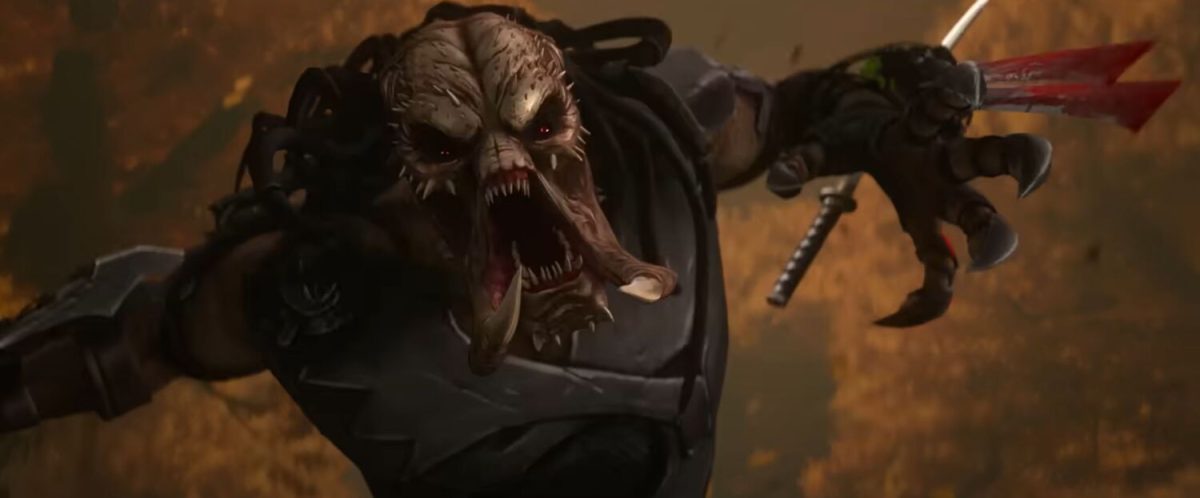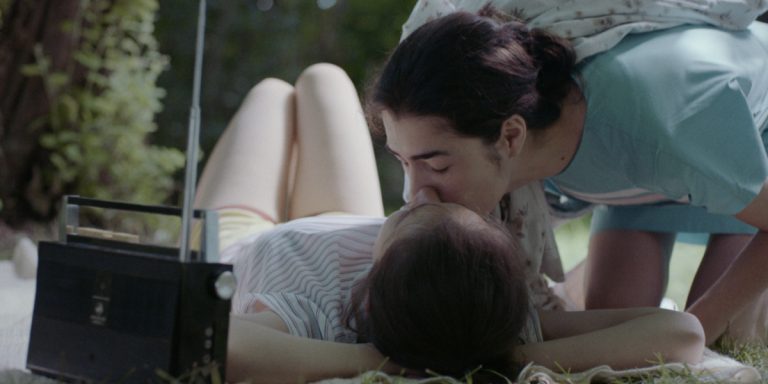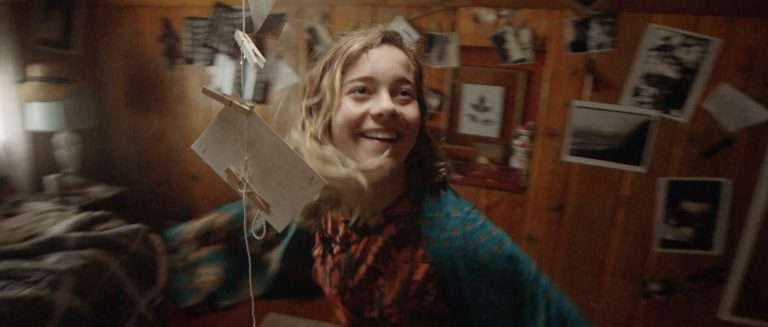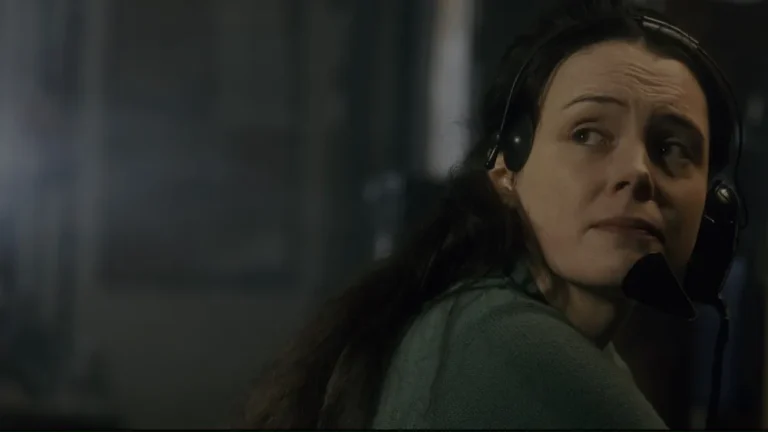My belief about “Predator” as a franchise—and there is nothing original about this belief, just a result-oriented outlook at what is working—is that the ideal “Predator” movie starts as an entirely different genre film before the Predator interrupts the proceedings or operates in the fringes of the setting before it reveals itself and hijacks the setting, transmuting the genre. The Yautja (finally canonized to be the true name of the Predator species) codex, which opens this film, highlights how the Predator’s enjoyment of the hunt across the galaxy depends upon its choosing the strongest of its prey.
That statement invariably postulates questions that can be asked either in playgrounds or in nerding-out sessions: Who is stronger? Is it a Predator or a Samurai? Is it a Predator or a Viking? Even if those questions become boilerplate, the ethos should be how cool a battle sequence would look between a Viking warrior and a Predator, or better still, a samurai and a Predator. Director Dan Trachtenberg, from a screenplay by Micho Robert Rutare based on a story co-written by Rutare and Trachtenberg, answers all those questions in a bloody, pulpy anthology consisting of three tales, which later connect in a surprisingly impactful fashion.
The surprise doesn’t stem from the fact that Predator as a franchise could ideally produce installments set in different time frames of history, just interrupted by a Predator. The surprise stems from the conceptualization taking this long to come to fruition. Titled “The Shield,” “The Sword,” and “The Bullet,” after the primary mode of weapons used by the protagonists in their respective eras, these three anthologies comprise three different subsets of the action genre.
“The Shield” is a Viking-era coming-of-age cum revenge tale of Ursa, a Viking Kalnswoman leading her troops (which also includes her son Anders) to destroy a rival tribe. While the emotional throughline of Ursa’s past with regard to her revenge and her interactions with her troops, as well as the leader of the rival tribe, seems boilerplate with its angry inflexions and outbursts, there is a sincerity present, which is complemented, of course, by the animation provided by The Third Floor. Until, of course, the Predator turns up—a dark, bulky, and massive predator using a sonic weapon to disrupt the Vikings’ armor while bashing them to a pulp. It is fun to watch how Ursa manipulates her snowy environment to take care of the Yautja, even as she is worried for her young son.

“The Sword” is easily the strongest of the three outings, a mostly wordless jidaigeki (Japanese period film) set in the years 1609–1629, charting a war of succession between two brothers and the intensity of each other’s goal to become the shogun. As adulthood, hardened by their father’s manipulation, rolls around, the two brothers find themselves at odds again—one as the new shogun and the other as a samurai. As the samurai infiltrates the castle of the shogun, little does he know he is watched by a camouflaged Yautja, who has chosen him as the prey to hunt.
The final piece of this anthology is “The Bullet,” a World War II aerial dogfight story where American car mechanic Torres (Rick Gonzalez), drafted to war, intercepts, along with his squadron, a mysterious aircraft that is invisible to the naked eye. As futuristic weaponry begins to interest Torres, he finds himself caught in a dogfight with his squadron against this Yautja spaceship and has to maneuver his craft and weapons against this advanced technology driven by a species whose only edict is to hunt its prey.
The three anthologies are varied in terms of quality, and perhaps it becomes a trifle difficult to judge an anthology as a whole. But what shines in Trachtenberg and co-director Joe Wassung is the treatment of the material, aided by gorgeous animation from the Third Floor. The action set pieces, be it the aerial dogfight, the sword fighting, or the visceral brawls, are designed quite well. The governing ethos seems to be to craft a pulpy, violent endeavor, serving only to look cool and provide visceral carnage, either from the perspective of or against the Predator.
It doesn’t have the space to provide hints of emotional complexity to the protagonist or the Predator (like Trachtenberg had woven in “Prey”), but the ambition of “Predator: Killer of Killers” is far different. The connective tissue, unlike most anthologies of such nature, actually manages to coalesce and craft the three segments into a singular narrative that not only enhances the lore of The Predator but also maintains a semblance of interest within the Yautja by not compromising on their base nature.
It helps that the three protagonists are likeable and have enough emotional throughline for a viewer to connect and root for them against these predators. But most importantly, Trachtenberg never shortchanges the greatness of a “cool visual” or even a “cool idea,” and for this reason alone, “Predator: Killer of Killers” rises above being just a teaser for “Predator: Badlands” and being a cool film in its own right.






![Offbeat Cops [2022]: ‘NYAFF’ Review: A beautiful unconventional film with intertwined threads](https://79468c92.delivery.rocketcdn.me/wp-content/uploads/2022/07/OFFBEAT-COPS-MOVIE-REVIEW-1-768x512.jpg)
![Dealer/Healer [2017]: NYAFF Review](https://79468c92.delivery.rocketcdn.me/wp-content/uploads/2017/07/Dealer-Healer-768x432.jpg)
